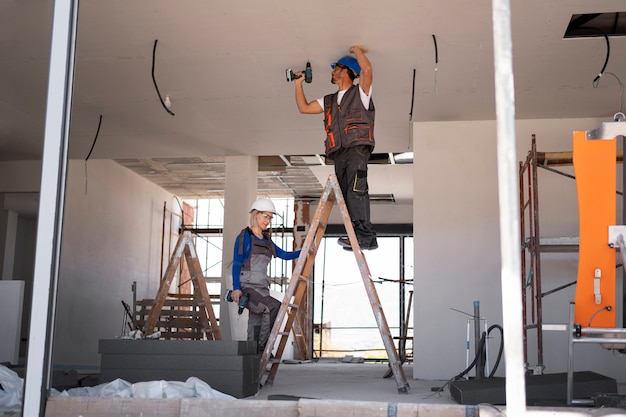Residential interior designers are the creative minds behind making a house feel like a home. They have the ability to transform a blank space into a warm and welcoming environment that reflects the personality and lifestyle of the homeowner. But what goes on inside the mind of a residential interior designer? How do they come up with innovative ideas and bring them to life? Let's take a closer look at their creative process to gain a better understanding of the magic they create.
The Initial Consultation
When a residential interior designer takes on a new project, the first step is usually an initial consultation with the client. During this meeting, the designer will gather information about the client's preferences, lifestyle, budget, and expectations for the project. This is a crucial step in understanding the client's needs and developing a design concept that aligns with their vision.
Key points during the initial consultation:
- Discussing the client's style preferences and aesthetic goals.
- Understanding the functional requirements of the space.
- Establishing a budget for the project.
- Setting timelines and project milestones.
Research and Inspiration
After the initial consultation, the residential interior designer will delve into research and gather inspiration for the project. This may involve studying the latest design trends, exploring different color schemes and textures, and visiting showrooms and galleries for inspiration. By immersing themselves in the world of design, they can find unique ideas and concepts to incorporate into their work.
Ways in which designers find inspiration:
- Browsing design magazines and websites.
- Attending design events and workshops.
- Exploring nature and architecture for creative ideas.
- Creating mood boards to visualize the design concept.
Concept Development
Once the research and inspiration phase is complete, the residential interior designer will start developing the design concept for the space. This involves creating a cohesive plan that incorporates the client's preferences, functional needs, and aesthetic goals. The designer will consider elements such as furniture layout, color palette, lighting, and accessories to bring the concept to life.
Key aspects of concept development:
- Creating floor plans and elevations to visualize the space.
- Selecting furniture, textiles, and finishes that complement the design concept.
- Choosing lighting fixtures and accessories to enhance the ambiance.
- Considering sustainable and eco-friendly design solutions.
Collaboration and Communication
Effective communication is essential in the process of residential interior design. Designers work closely with clients, contractors, vendors, and other professionals to ensure that the project runs smoothly and meets the desired outcome. By collaborating and communicating effectively, designers can address any challenges that may arise and make adjustments to the design as needed.
Elements of successful collaboration:
- Regular meetings with the client to provide updates on the project.
- Working closely with contractors and vendors to implement the design plan.
- Addressing any feedback or concerns from the client in a timely manner.
- Adapting to changes and making revisions as needed during the project.
Implementation and Execution
Once the design concept is finalized and approved by the client, the residential interior designer will move forward with the implementation and execution phase. This involves coordinating the delivery and installation of furniture, overseeing construction and renovation work, and adding the finishing touches to the space. The designer's attention to detail and project management skills are crucial in ensuring that the design vision is realized.
Steps involved in implementation:
- Coordinating with contractors and vendors for project execution.
- Supervising the installation of furniture, fixtures, and accessories.
- Managing the budget and timeline of the project.
- Making final adjustments and refinements to the design as needed.
Final Reveal and Client Satisfaction
The culmination of the residential interior designer's creative process is the final reveal to the client. This is the moment when the client gets to see their transformed space for the first time and experience the magic of the designer's work. The designer's goal is to create a space that not only meets the client's expectations but exceeds them, leaving them feeling satisfied and delighted with the outcome.
Aspects of client satisfaction:
- Ensuring that the design reflects the client's personality and lifestyle.
- Addressing any final concerns or adjustments to the design.
- Providing guidance on maintenance and care for the space.
- Soliciting feedback from the client for future improvements.
Residential interior designers play a crucial role in creating functional and aesthetically pleasing spaces that enhance the quality of life for their clients. By understanding their creative process and the steps involved in bringing a design concept to life, we can truly appreciate the artistry and skill that goes into their work.
